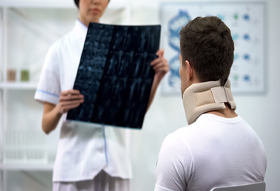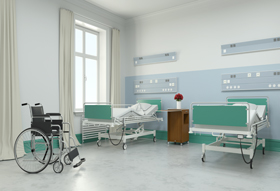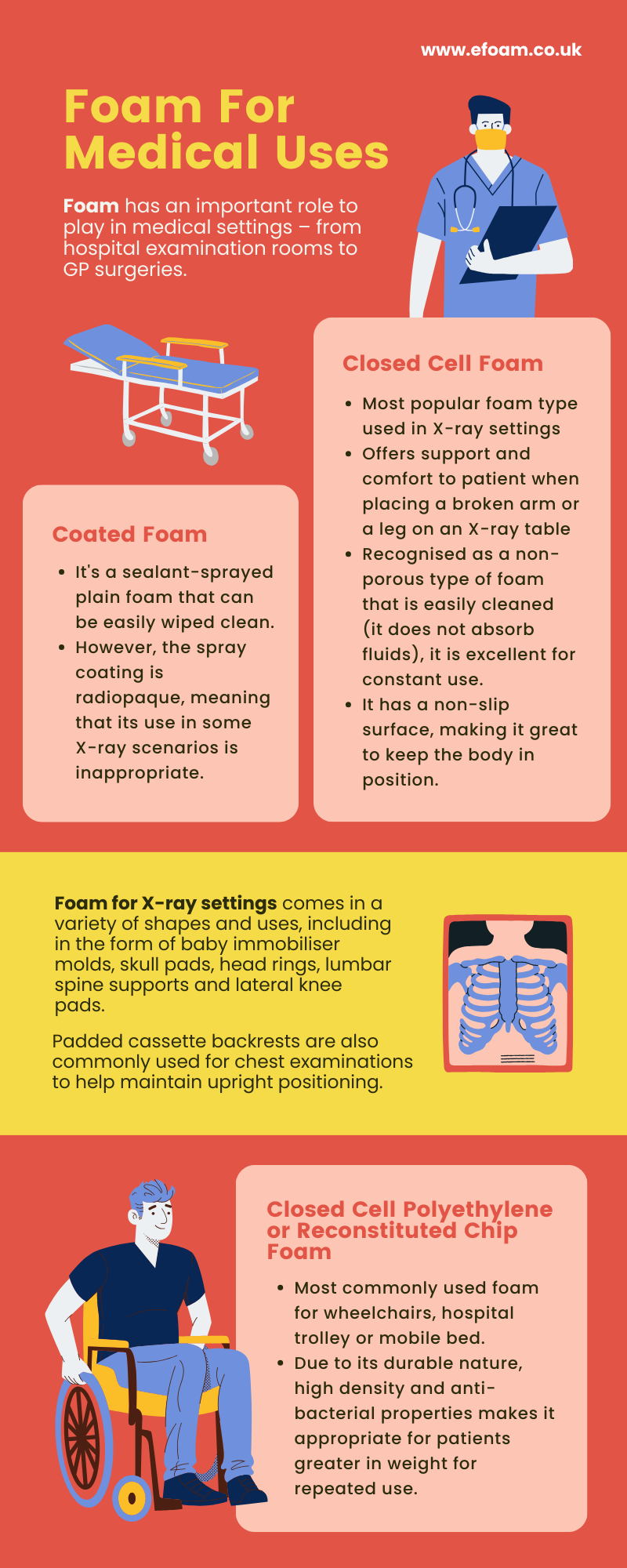
Medical uses of foam

It’s commonly known that foam is an incredibly versatile material, and one that is widely used in both personal and commercial environments. However, foam has an important role to play in medical settings – from hospital examination rooms to GP surgeries. As is indeed the case in other commercial settings, one type of foam does not ‘fit’ all applications – various grades, types, thicknesses and densities are used to achieve the desired outcome.
A large proportion of us have broken a bone at least once in our life. To be assessed, we’ve likely undergone X-ray examinations to determine a fracture or clean break. However, it’s both uncomfortable and inappropriate to place an arm or a leg, for example, on an X-ray table with no support. A patient with a broken bone of some sort will find it difficult to hold their body in position for an accurate, high-quality X-ray to be taken. For this reason, foams cut to size and shape are commonly used to achieve both comfort and support.
Closed-cell foam is the most popular foam type used in X-ray settings. Recognised as a non-porous type of foam that is easily cleaned (it does not absorb fluids), it is excellent for constant use. Closed-cell foam also has a non-slip surface, making it great to keep the body in position. Another popular foam-based material is coated foam, which is a sealant-sprayed plain foam that can be easily wiped clean. However, the spray coating is radiopaque, meaning that its use in some X-ray scenarios is inappropriate. Foam for X-ray settings comes in a variety of shapes and uses, including in the form of baby immobiliser molds, skull pads, head rings, lumbar spine supports and lateral knee pads. Padded cassette backrests are also commonly used for chest examinations to help maintain upright positioning.

When in a hospital or doctors’ surgery, you may remember needing help in getting from A to B – regardless of whether you were an inpatient or outpatient. For example, you may have been transferred between facilities in a wheelchair, or on a hospital trolley or mobile bed. These mobility aids endure heavy use in medical settings, and therefore, seat padding needs to be of high quality. The most commonly used foam for wheelchairs of this type is high-density, closed-cell polyethylene or reconstituted chip foam. Hospital trolleys endure the same heavy usage and must be frequently sanitized, making high-density foams the most popular for repeated patient use. Due to its durable nature and high density, it is also appropriate for patients greater in weight.
In A&E and in GP surgeries, for example, patients are constantly being seen for assessment and are frequently asked to sit or lie on an examination bed. Like mobility aids, this equipment endures heavy usage all whilst coming into contact with a number of injuries and illnesses. For this reason, high density foam is a popular choice in medical settings due to its high durability as well as its anti-bacterial properties.
Should you require any further information on how foam is used in hospital and other medical settings, or would like to enquire about replacement foam components, please contact us.


